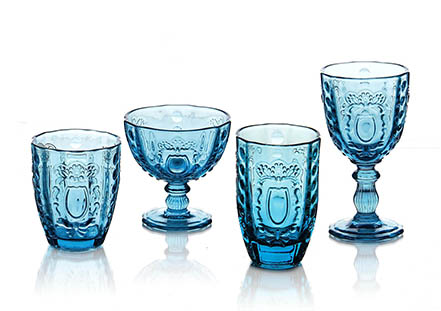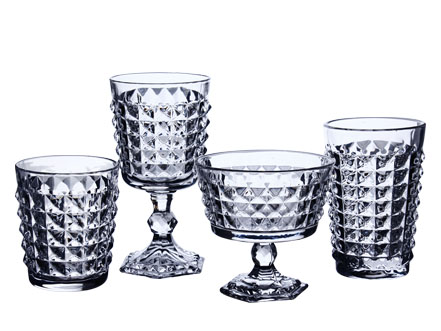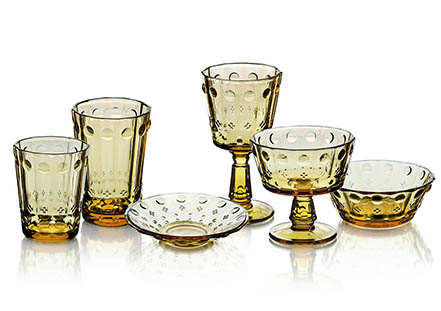Recommended Products
Top articles
- Highball Glass
- Water Glasses
- Beer Glasses
- Cocktail Glasses
- Decanters
- Glass Plates
- Cake Stands
- The Best Wine Glass
- Shot Glasses
- Sherry Glasses
Latest articles
- Highball Glass
- Water Glasses
- Beer Glasses
- Cocktail Glasses
- Decanters
- Glass Plates
- Cake Stands
- The Best Wine Glass
- Shot Glasses
- Sherry Glasses
Your browsing history

In Their Cups As Party Animals Raise Their Glasses Too Often In Drinks Stakes
Excessive drinking has become a feature of the Melbourne Cup racing gala, writes Leonie Wood.
AT THE railway station in the morning sunshine, young Derby day racegoers were already making bets.
"Fifty bucks you get blind drunk and pass out by three o'clock," one woman wagered her male companion.
At Flemington, three women in their mid-30s, their Esky laden with half-sized bottles of champagne and cans of pre-mixed spirits, were refused entry to the course. They hesitated only briefly before downing the contents - all the contents.
"I've drunk five UDL cans in five minutes," one woman said. "We're just going to try to drink as many as we can before we get in, and then we'll be sorted for the rest of the day."
Her friends laughed, kept drinking, and began plotting their Oaks day adventure, starting with a chicken and champagne breakfast before they hit the track for more drinking.
At the racecourse railway station, less than an hour after the Melbourne Cup, a young woman, abandoned by her friends, passed out, drunk. Her head was slumped on her chest, her feathered fascinator pitched to one side. Police were trying to revive her.
By Tuesday evening, Melbourne's streets were showing the overindulgence of the Melbourne Cup party: vomit splashed on footpaths, laneways and the sides of buildings.
Drinking, especially excessive drinking, has become a feature of the racing gala, in which the party culture is all about indulgence and exceeding limits.
The cup image is about going to extremes with food, fashion, gambling and alcohol.
Framed by racebooks and roses, Flemington's revellers are photographed sipping champagne and shiraz in the members' car parks, or downing beers on the lawns in front of the public grandstand. Yet there are no campaigns promoting safe and responsible drinking at the races or sporting events.
Rob Moodie, chief executive of VicHealth and chairman of the Premier's Drug Prevention Council, wants all government and sporting authorities, such as the Victoria Racing Club, to take a strong stance against excessive drinking and under-age drinking at the races.
"The MCG had to deal with it because they had problems and . . . given there is such a huge number of people there (at the racecourse), it's up to the people who run the events, and it's up to the governments at all levels, to do something about it," Dr Moodie said.
"We know that over the past 20 years, while overall alcohol consumption rates have not increased in Victoria, binge-drinking, particularly among young people, has increased dramatically."
Dr Moodie said a 2003 study found about 14 per cent of men and 4 per cent of women aged 22 to 24 described themselves as either binge drinkers or heavy drinkers.
"That's what they say," Dr Moodie said. "So, presumably, it's an underestimate."
About 27 per cent of men 18 to 21 said that when they went out for a drink they aimed to get drunk.
Figures released this week by the National Drug and Alcohol Research Council indicated about 60 per cent of people had a friend or family member who at some stage had a drinking problem.
About half the 1520 survey respondents indicated it was "part of the Australian culture" to get drunk occasionally.
Paul Dillon, of the research council, , said the media reinforced images of drinking to excess at the races. "I tried to count the scenes on two news programs of the cup that night - how many involved alcohol, getting drunk, pouring drinks - and I lost count," Mr Dillon said.
The VRC and police this year launched a crackdown on under-age drinking at the races, but Mr Dillon said the programs ignored the dangers of binge-drinking by adults.
The State Government is awaiting recommendations from a parliamentary committee that has been examining the extent and culture of alcohol use in the community and reviewing strategies for reducing excessive drinking before it acts.
Dr Benny Monheit, a drug and alcohol specialist at The Alfred hospital, said people initially felt relaxed when they drank and lost some inhibitions, but continued drinking led to a loss of control.
"They can also lose control of their bodily functions, perhaps they might vomit or have diarrhoea," Dr Monheit said. "They can pass out and that affects their breathing ability. People have got to set themselves a limit."
National Health and Medical Research Council guidelines indicate men should have no more than six standard drinks in a day, and women no more than four.
Over a longer period, men should average no more than four standard drinks a day and women should stop at two.
Under-age punters who plan to drink and their adult mates who buy them alcohol at today's races will be in the spotlight after police caught 24 under-age drinkers at Flemington on Oaks day. People at today's family-oriented Emirates Stakes Day will have to wear proof-of-age wristbands to get alcohol. Police said buying drinks for anyone under 18 could attract a $600 fine.
Twenty drunk adults were arrested on Oaks day.
Ten drink-drivers were also caught near Flemington racecourse, with a 32-year-old woman giving a .127 blood-alcohol reading. Police tested 3855 drivers. -- With SELMA MILOVANOVIC



